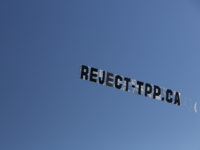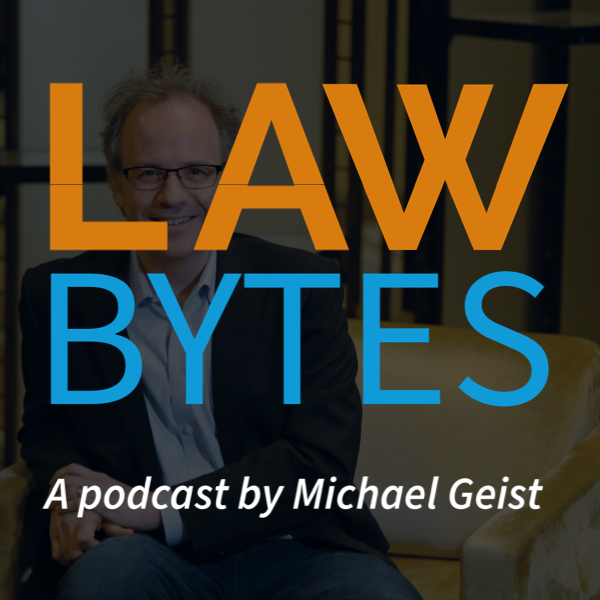The Canada Revenue Agency has obtained a federal court order requiring PayPal to hand over years of transactional information from all business accounts in Canada. The scope of the order is incredibly broad, covering any business account holder who sent or received a payment over a nearly four year period from January 1, 2014 to November 10, 2017. The information to be disclosed includes:
Latest Posts
Canada’s Billion Dollar Wireless Cash Grab: CRTC Data Shows Overage Fees Now Exceed Roaming Revenues
The CRTC’s release of the 2017 Communications Monitoring Report ushered in the usual conflicting reports on the state of communications services in Canada. I found the most compelling take to be Tefficient’s data charts that show Canadian wireless companies generating revenue per GB that is the highest in the developed economy world (literally off-the-chart) alongside mobile data usage growth rates that are among the slowest on record. The Canadian Wireless Telecommunications Association described the growth rate as “impressive”, but when just about everyone has faster growth rates, it is readily apparent that high wireless costs in Canada have a negative impact on usage.
Digging further into the data, the CRTC provides insight into an oft-overlooked source of revenue for the carriers: overage charges, which represent an ongoing source of frustration for many consumers. While many carriers have unlimited broadband plans, unlimited wireless plans are rare, leaving subscribers to carefully monitor their data usage. Based on the CRTC data, however, many find themselves exceeding their monthly cap fairly regularly as data overage charges constitute 6 per cent of total retail wireless revenues:
No Deal is Better than a Bad Deal: Why Canada Won the TPP By Standing Up for Balanced IP, Culture, and the Auto Sector
The end-game in trade negotiations always generates more than its fair share of drama and last week’s effort to re-work the Trans Pacific Partnership without the United States was no different. Canada was squarely in the spotlight with Prime Minister Justin Trudeau a no-show at a ministerial meeting that was attributed to a scheduling error, but had the hallmarks of gamesmanship designed to demonstrate a willingness to walk away from the deal.
I posted over the weekend on some of the key IP provisions that have been suspended and published an op-ed in the Globe and Mail that argues that the result was a major win for Canada as the government leveraged its position as the second largest economy left in the TPP to extract significant concessions on intellectual property, culture, and the auto sector. Indeed, despite pressure to cave on key demands from the Japanese and Australian governments, Canada stood its ground and is helping to craft a trade deal that better reflects a balanced approach on challenging policy issues.
Rethinking IP in the TPP: Canadian Government Plays Key Role in Suspending Unbalanced Patent and Copyright Rules
Years of disappointment in trade negotiations have left many Canadian intellectual property watchers hoping for the best, but expecting the worst when it comes to the IP provisions in trade deals. In earlier talks, Canadian negotiators would often advocate balanced positions during the negotiations, but ultimately cave to (primarily) U.S. pressures during the final round of talks. Given that history, this week’s outcome of the TPP11 is reason for celebration as the second largest economy in the TPP finally acted like it. The Liberal government demonstrated genuine leadership in demanding significant changes to the flawed TPP intellectual property chapter and refusing to back down under intense pressure from some of the negotiating parties. The result isn’t perfect, but the newly named Comprehensive and Progressive Agreement for the Trans Pacific Partnership (CPTPP), which still requires considerable negotiation, features a significantly improved IP chapter that suspends some of the most problematic provisions.
Global Music Lobby Groups Hit Ottawa in Blitz Over Copyright Term Extension
Global groups such as the International Confederation of Music Publishers and the U.S. National Music Publishers Association came to Ottawa this week to lobby the government to extend the term of copyright beyond the Berne Convention standard of life of the author plus an additional 50 years. The lobbying effort kicked off with a Hill Times piece, followed by an evening wine and dine event with politicians, a panel from the supposedly progressive Pearson Centre for Progressive Policy, and then yet more lobbying with Canadian music lobby groups. The lobbying campaign comes on the heels of the controversial 2015 copyright extension of sound recordings, which some groups used to sow confusion about the term of protection for sound recordings (from 50 to 70 years) with the term of protection for the composition or written work (frequently longer at life plus 50 years).











